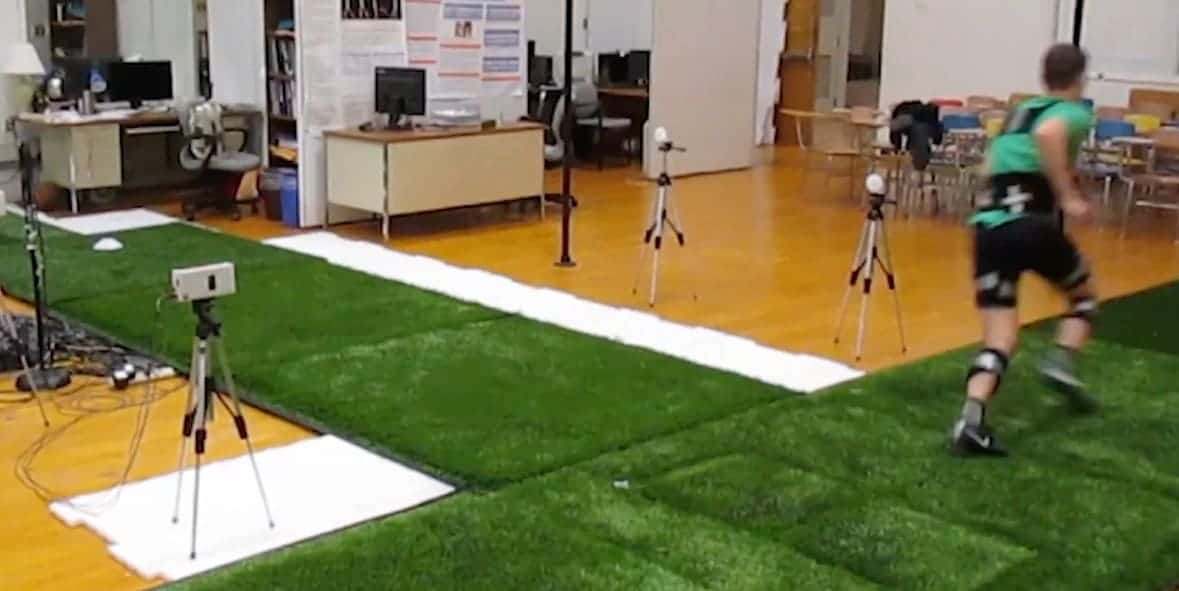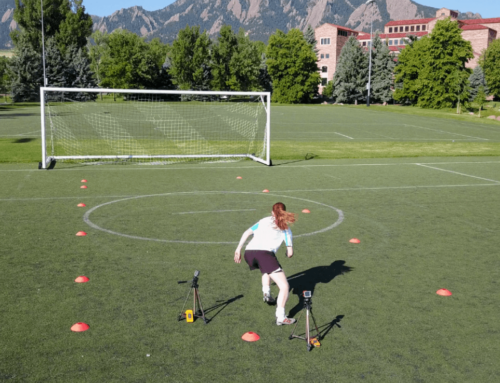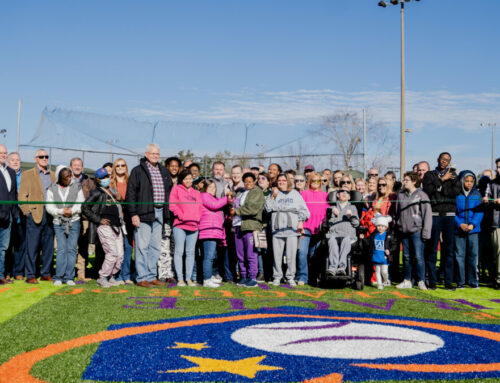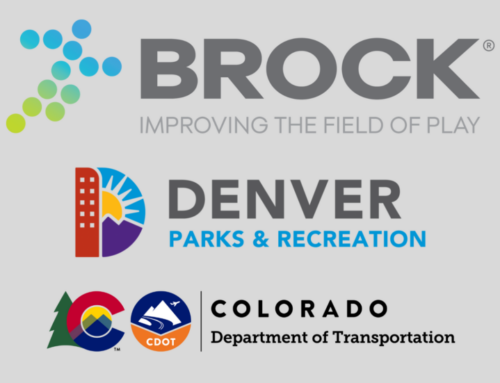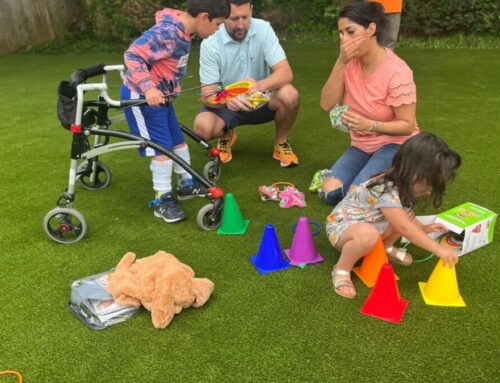There are over 12,000 artificial turf infilled systems in the United States, and more are installed every year. Synthetic sports fields are used as a substitute when natural grass is not an option. Artificial turfs provide several advantages, notably the durability to be used year-round, and play in heavy precipitation regions without flooding or pooling on the surface. Artificial turfs don’t require the mowing, fertilization, or irrigation that natural grass does. Because of these benefits, artificial turf will continue to be a popular option for schools and recreation departments.
Surface hardness is a concern with sports surfaces, particularly in an artificial system. GMax testing is the industry standard assessment of a surface’s impact attenuation and shock absorption. High GMax values indicate the field is not absorbing the impact, but rather returning the force to the player. This can increase the risk of injuries resulting from contact with the surface, including concussions, traumatic brain injuries, and skull fractures. High GMax scores suggest the field is not safe for athletes who are running, diving, falling, or being tackled on the field.
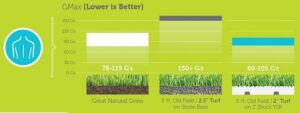
The American Society for Testing and Materials specifies that all tested areas of an artificial surface must measure below 200 G’s. However, natural grass surfaces typically measure much lower, between 70-115 G’s. This low GMax score shows natural grass fields are effective at absorbing impacts. Artificial surfaces are engineered for maximum playability, but not all turfs are meeting the safety and performance benchmarks set by natural grass.
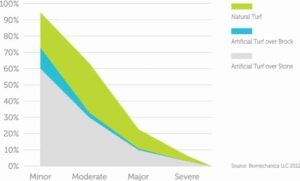
Installing a shock pad underneath the turf can make an artificial field behave and feel more like a natural surface. The pad works, in part, by lowering the GMax of the field. Research by BioMechanica found the inclusion of a Brock ShockPad in a turf system increased the estimated probability of a non-injurious outcome from 11% to 29% and “significantly reduced the estimated risk of minor, moderate, and major head injuries.”
GMax measurements are one of the most popular way to compare surfaces, but GMax alone does not give the full picture. Vertical deformation is a measurement that quantifies deformation or “give” of the field on impact. If the field is too stiff, it puts athletes at risk of head injuries and other impact injuries. If the field is too soft, it can cause soft tissue and joint injuries, including strains and tears. An ideal sports surface is somewhere in the middle, so it is soft enough to cushion impacts, but firm enough to be stable underfoot.
ShockPads under artificial turf systems typically increase the vertical deformation of the surface so it behaves more like natural grass. It has been suggested including a shock pad can increase the vertical deformation too substantially, leading to lower extremity injuries. However, a University of Tennessee study concluded “there is little evidence to suggest that the inclusion of a shock pad would increase the risk of lower extremity injury.”
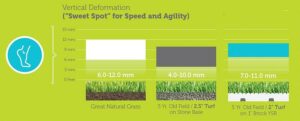
The study, carried out by UT’s Turfgrass Science Department, did a biomechanical evaluation of 3 different movements on an artificial turf surface with and without a Brock ShockPad. The impact attenuation of drop landing, drop jump, and cutting movements were measured to analyze how the inclusion of a shock pad in an artificial turf system could affect lower extremity injuries and other performance variables:
“DURING THE DROP JUMP, THE KINETIC VARIABLES DURING TAKEOFF (E.G. PEAK VERTICAL GRF, PEAK ANKLE PLANTARFLEXION MOMENT AND CONCENTRIC POWER, PEAK KNEE CONCENTRIC MOMENT AND CONCENTRIC POWER AS WELL AS PEAK HIP EXTENSION MOMENT AND CONCENTRIC POWER) WERE NOT DIFFERENT IN THE PAD SURFACE COMPARED TO THE TURF SURFACE.”
SIMILARLY, THERE WERE NO DIFFERENCE IN THESE VARIABLES VERTICAL PEAK GRF VARIABLES AND SAGITTAL-PLANE JOINT KINETIC VARIABLES BETWEEN THE PAD AND TURF SURFACE CONDITIONS IN THE 90 DEGREE CUTTING MOVEMENT”
FURTHERMORE, THE MEDIOLATERAL PEAK GRF, PEAK ANKLE, KNEE AND HIP FRONTAL-PLANE JOINT MOMENTS AND POWERS WERE ALL SIMILAR BETWEEN THE TWO SURFACE CONDITIONS DURING THE PUSH OFF PHASE OF CUTTING MOVEMENTS.
THESE RESULTS PROVIDE EVIDENCE THAT THE INCLUSION OF THE SHOCK PAD DID NOT NEGATIVELY AFFECT THE SPORT PERFORMANCE ON THE SURFACE.”
Dr. John Sorochan, a professor and researcher at the University of Tennessee who was involved in the research noted, “it’s important to benchmark pristine natural grass as the holy grail of athletic fields in my opinion… The traction, the footing, that’s what we want to achieve.” Sorochan described the benefits of shock pads, and explained, “We have found in our research looking at shock pads that it adds a lot more consistency to the athlete.”
Independent research by BioMechanica and the University of Tennessee supports the benefits of installing a Brock ShockPad under artificial turf. Brock ShockPads effectively lower the GMax to protect athletes from impact injuries and concussion, but the pad does not create a field that is too soft or squishy to run on. The pad allows the GMax and vertical deformation of the surface to closely align with averages taken from natural grass surfaces, to make a safer, high-performance field.

